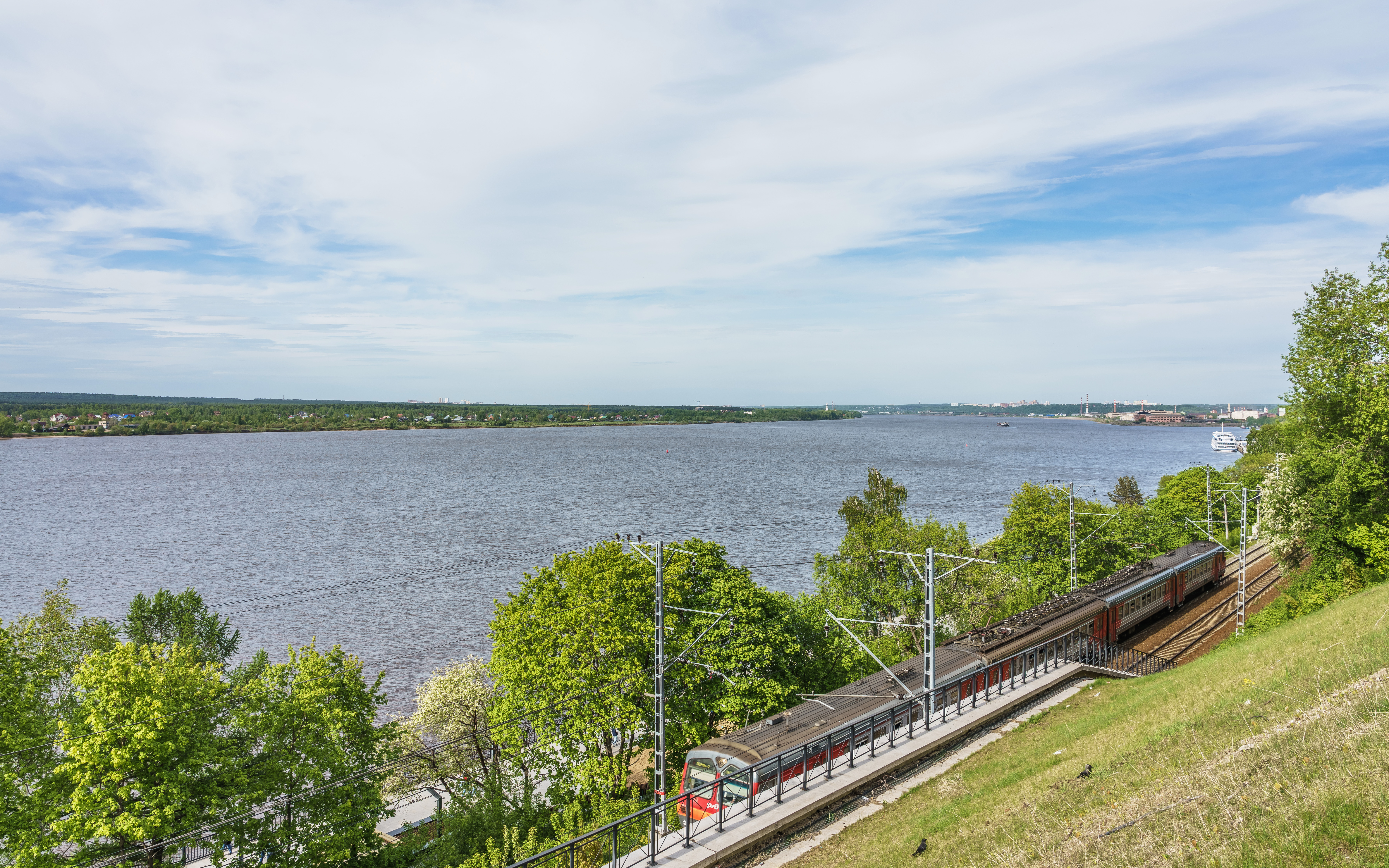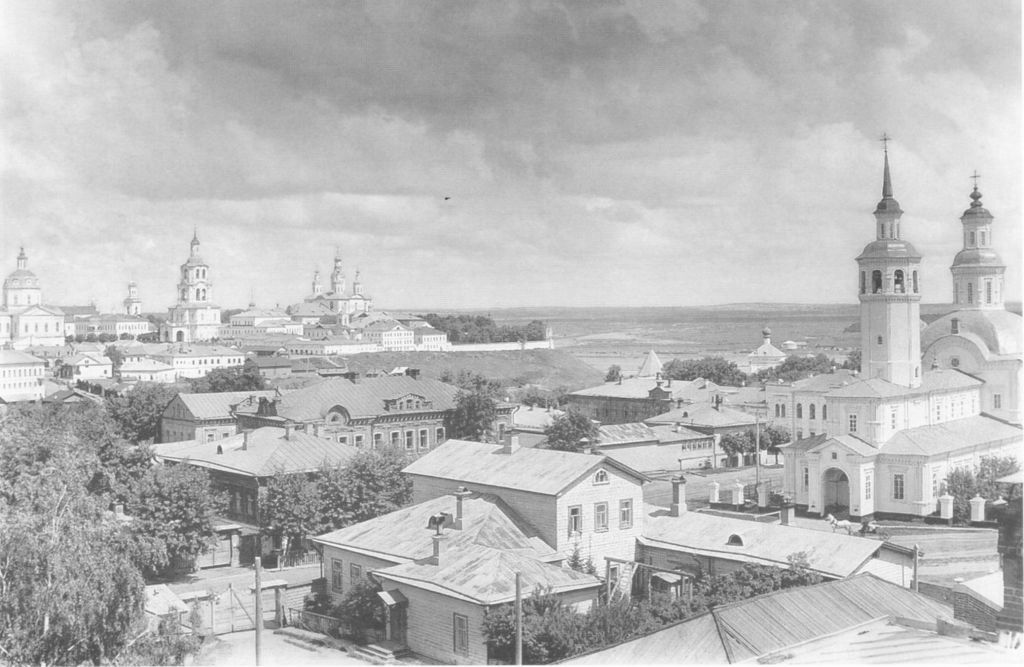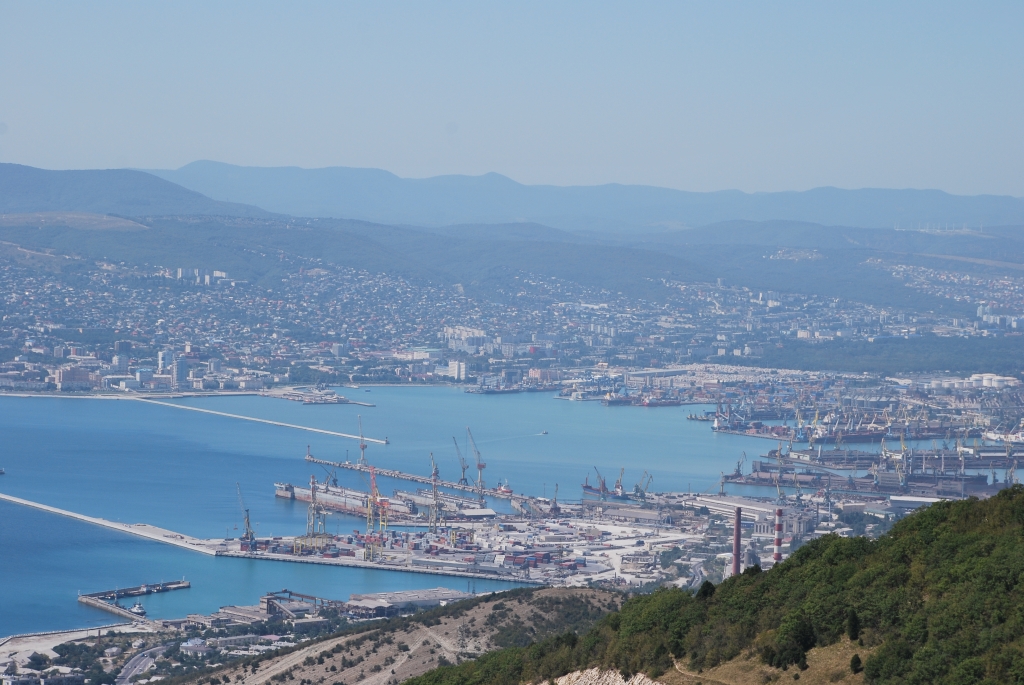|
Izhevsk Railway Station
Izhevsk railway station (russian: Ижевск) is a railway station in the capital of Udmurtia — Izhevsk in Russia. Main information It includes the main building (built in 1952–1954), suburban terminal (built in 1971 and renovated in 2009) and a number of service buildings. Trains This is a list of trains that pass the station: * Moscow — Izhevsk * Yekaterinburg — Izhevsk * Nizhny Novgorod — Izhevsk * St.Petersburg — Izhevsk * Adler — Perm * Novorossiysk — Perm * Kirov — Kazan * Novorossiysk — Izhevsk * Adler — Izhevsk * Anapa — Izhevsk Izhevsk (russian: Иже́вск, p=ɪˈʐɛfsk; udm, Ижкар, ''Ižkar'', or , ''Iž'') is the capital city of Udmurtia, Russia. It is situated along the Izh River, west of the Ural Mountains in Eastern Europe. It is the 21st-largest city i ... Gallery File:Вокзал станции Ижевск ночью.jpg, Station at night File:Вокзал станции "Ижевск".jpg, Main building facade F ... [...More Info...] [...Related Items...] OR: [Wikipedia] [Google] [Baidu] |
Gorky Railway
The Gorky Railway (Горьковская железная дорога) is a subsidiary of the Russian Railways headquartered in Nizhny Novgorod (formerly known as Gorky, hence the name). The railway network serves nine federal subjects of the Russian Federation: Nizhny Novgorod Oblast, Vladimir Oblast, Kirov Oblast, Ryazan Oblast, Mordovia, Chuvashia, Udmurtia, Tatarstan, and Mari El. Its railway route length approximates 7987 km. Construction of the mainline from Moscow through Vladimir to Nizhny Novgorod started in May 1858 and was completed within four years. This private enterprise was acquired by the imperial government in 1893. The Murom Railway was opened in 1880. The private Moscow-Kazan Railway was completed in 1912; it was nationalized by the Bolsheviks six years later. The Gorky Railway was created as a separate organisation in 1936. The Moscow-Kazan Railway was also organised as a separate organisation at this time The existing railway company traces its h ... [...More Info...] [...Related Items...] OR: [Wikipedia] [Google] [Baidu] |
Perm, Russia
Perm (russian: Пермь, p=pʲermʲ), previously known as Yagoshikha (Ягошиха) (1723–1781), and Molotov (Молотов) (1940–1957), is the largest city and the administrative centre of Perm Krai, Russia. The city is located on the banks of the Kama River, near the Ural Mountains, covering an area of , with a population of over one million residents. Perm is the fifteenth-largest city in Russia, and the fifth-largest city in the Volga Federal District. In 1723, a copper-smelting works was founded at the village of ''Yagoshikha''. In 1781 the settlement of Yagoshikha became the town of ''Perm''. Perm's position on the navigable Kama River, leading to the Volga, and on the Siberian Route across the Ural Mountains, helped it become an important trade and manufacturing centre. It also lay along the Trans-Siberian Railway. Perm grew considerably as industrialization proceeded in the Urals during the Soviet period, and in 1940 was named ''Molotov'' in honour of V ... [...More Info...] [...Related Items...] OR: [Wikipedia] [Google] [Baidu] |
Railway Stations In Udmurtia
Rail transport (also known as train transport) is a means of transport that transfers passengers and goods on wheeled vehicles running on rails, which are incorporated in tracks. In contrast to road transport, where the vehicles run on a prepared flat surface, rail vehicles (rolling stock) are directionally guided by the tracks on which they run. Tracks usually consist of steel rails, installed on sleepers (ties) set in ballast, on which the rolling stock, usually fitted with metal wheels, moves. Other variations are also possible, such as "slab track", in which the rails are fastened to a concrete foundation resting on a prepared subsurface. Rolling stock in a rail transport system generally encounters lower frictional resistance than rubber-tyred road vehicles, so passenger and freight cars (carriages and wagons) can be coupled into longer trains. The operation is carried out by a railway company, providing transport between train stations or freight customer facili ... [...More Info...] [...Related Items...] OR: [Wikipedia] [Google] [Baidu] |
Anapa
Anapa (russian: Ана́па, ) is a town in Krasnodar Krai, Russia, located on the northern coast of the Black Sea near the Sea of Azov. Population: History The area around Anapa was settled in antiquity. It was originally a major seaport (Sinda) and then the capital of Sindica. The colony of Gorgippia ( el, Γοργιππία) was built on the site of Sinda in the 6th century BCE by Pontic Greeks, who named it after a king of the Cimmerian Bosporus. In the 2nd and 3rd centuries BCE, Gorgippia flourished as part of the Bosporan Kingdom, as did its guild of shipowners, which controlled maritime trade in the eastern part of the Black Sea. A fine statue of Neokles (a local potentate, son of Herodoros) was unearthed by Russian archaeologists and is now on exhibit at the Russian Museum. Gorgippia was inhabited until the 3rd century CE, when it was overrun by neighbouring native tribes. These tribes, of Circassian or Adyghe origin (specifically of the Natkhuay tribe), gave Ana ... [...More Info...] [...Related Items...] OR: [Wikipedia] [Google] [Baidu] |
Adlersky City District
Adlersky City District (russian: А́длерский райо́н) is the southernmost of four city districts of the city of Sochi in Krasnodar Krai, Russia, lying along the Black Sea coast near the southern Russian border with Georgia. The city district borders Maykopsky District of Adygea in the north, Mostovsky District of Krasnodar Krai in the east, Abkhazia in the south, and Khostinsky City District in the northwest. In the southwest, it is bordered by the Black Sea. Population: Adlersky District was chosen to host the 2014 Winter Olympics. The historical center of the district is Adler Microdistrict () — formerly classified as a town, but today a microdistrict of Adlersky City District—located at the mouth of the Mzymta River. History The settlement was founded by Russians on 18 June 1837 as the fort of Svyatoy Dukh (''Holy Spirit''). However, this area had been inhabited long before the Russian arrival. During the Middle Ages, it was the site of Liesh, a Sadz Abkh ... [...More Info...] [...Related Items...] OR: [Wikipedia] [Google] [Baidu] |
Kazan
Kazan ( ; rus, Казань, p=kɐˈzanʲ; tt-Cyrl, Казан, ''Qazan'', IPA: ɑzan is the capital and largest city of the Republic of Tatarstan in Russia. The city lies at the confluence of the Volga and the Kazanka rivers, covering an area of , with a population of over 1.2 million residents, up to roughly 1.6 million residents in the urban agglomeration. Kazan is the fifth-largest city in Russia, and the most populous city on the Volga, as well as the Volga Federal District. Kazan became the capital of the Khanate of Kazan and was conquered by Ivan the Terrible in the 16th century, becoming a part of Russia. The city was seized and largely destroyed during Pugachev's Rebellion of 1773–1775, but was later rebuilt during the reign of Catherine the Great. In the following centuries, Kazan grew to become a major industrial, cultural and religious centre of Russia. In 1920, after the Russian SFSR became a part of the Soviet Union, Kazan became the capital of the Tatar ... [...More Info...] [...Related Items...] OR: [Wikipedia] [Google] [Baidu] |
Kirov, Kirov Oblast
Kirov ( rus, Ки́ров, p=ˈkʲirəf, a=Ru-Киров.ogg) is the largest city and administrative center of Kirov Oblast, Russia. It is located on the Vyatka River in European Russia, 896 km northeast of Moscow. Its population was 518,348 in 2020. Kirov is a historical, cultural, industrial, and scientific center of Priural'e (territory on the west side of the Ural Mountains); place of origin for Dymkovo toys; the most eastern city founded during the times of Kievan Rus'. The city also had the names of Khlynov (, from 1457 to 1780), and Vyatka (, until 1934). History Principality and republic The native Slavic tribe of Central Russia and Volga regions, the Vyatichis (also called Viatichi), mixed here with the Novgorodian Slovenes and Finno-Ugric people. According to the medieval chronicles the first Russian settlements in the area appeared in 12th century. Kirov itself was first mentioned (as Vyatka) for the first time in 1374 when Novgorod ushkuyniks pl ... [...More Info...] [...Related Items...] OR: [Wikipedia] [Google] [Baidu] |
Novorossiysk
Novorossiysk ( rus, Новоросси́йск, p=nəvərɐˈsʲijsk; ady, ЦIэмэз, translit=Chəməz, p=t͡sʼɜmɜz) is a city in Krasnodar Krai, Russia. It is one of the largest ports on the Black Sea. It is one of the few cities honored with the title of the Hero City. Population: History In antiquity, the shores of the Tsemes Bay were the site of Bata ( el, Μπάτα), an ancient Greek colony that specialized in the grain trade. It is mentioned in the works of Strabo and Ptolemy, among others. Following brief periods of Roman and Khazar control, from the 9th century onwards, the area was part of the Byzantine θέμα Χερσῶνος ''Thema Khersonos'' (Province of Cherson). During the 11th century, the area was overrun and controlled by nomads from the Eurasian steppe, led by the Cumans. Later that century, the Byzantine emperor Ἀλέξιος Κομνηνός Alexios I Komnenos ( r. 1081–1118) was approached by Anglo-Saxon refugees, who had left Engl ... [...More Info...] [...Related Items...] OR: [Wikipedia] [Google] [Baidu] |
Adler Railway Station
Adler railway station (russian: link=no, Адлер) is a railway station in Adler District of Sochi. It is located on the North Caucasus Railway, a regional subsidiary of Russian Railways, and one of the largest rail passenger terminals in Russia. History Construction of the new railway station began in November 2010 to replace the existing one, which is located to the west. It is a hall of 150 by 60 m, in two parts, one on the side of the sea, and one on the city side. There is a car park, and the roof features solar collectors, which are used for heating. The new station has a capacity of 3000 to 5000 passengers per hour in normal operation and up to 20,000 passengers on the opening day of the 2014 Olympic Games. Construction was completed in 2013. The station was opened on 28 October 2013 in the presence of Russian President Vladimir Putin and Thomas Bach, the chair of the International Olympic Committee. Trains * Saratov – Adler * St.Petersburg – Adler * Nizhny Novg ... [...More Info...] [...Related Items...] OR: [Wikipedia] [Google] [Baidu] |
Izhevsk
Izhevsk (russian: Иже́вск, p=ɪˈʐɛfsk; udm, Ижкар, ''Ižkar'', or , ''Iž'') is the capital city of Udmurtia, Russia. It is situated along the Izh River, west of the Ural Mountains in Eastern Europe. It is the 21st-largest city in Russia, and the most populous in Udmurtia, with over 600,000 inhabitants. From 1984 to 1987, the city was called Ustinov (russian: Усти́нов), named after Soviet Minister of Defence Dmitry Ustinov.Izhlife.ruКак Ижевск 900 дней был Устиновым The city is a major hub of industry, commerce, politics, culture and education in the Volga Region. It is known for its defense, engineering and metallurgy industries. Izhevsk has the titles of the Armory Capital of Russia and the City of Labor Glory. History Pioneer settlements The pioneer settlements on the territory where modern Izhevsk now stands were founded by Udmurts in the 5th century. There were two fortified settlements situated on the banks of the Karl ... [...More Info...] [...Related Items...] OR: [Wikipedia] [Google] [Baidu] |
Nizhny Novgorod
Nizhny Novgorod ( ; rus, links=no, Нижний Новгород, a=Ru-Nizhny Novgorod.ogg, p=ˈnʲiʐnʲɪj ˈnovɡərət ), colloquially shortened to Nizhny, from the 13th to the 17th century Novgorod of the Lower Land, formerly known as Gorky (, ; 1932–1990), is the administrative centre of Nizhny Novgorod Oblast and the Volga Federal District. The city is located at the confluence of the Oka and the Volga rivers in Central Russia, with a population of over 1.2 million residents, up to roughly 1.7 million residents in the urban agglomeration. Nizhny Novgorod is the sixth-largest city in Russia, the second-most populous city on the Volga, as well as the Volga Federal District. It is an important economic, transportation, scientific, educational and cultural center in Russia and the vast Volga-Vyatka economic region, and is the main center of river tourism in Russia. In the historic part of the city there are many universities, theaters, museums and churches. The city w ... [...More Info...] [...Related Items...] OR: [Wikipedia] [Google] [Baidu] |
Yekaterinburg
Yekaterinburg ( ; rus, Екатеринбург, p=jɪkətʲɪrʲɪnˈburk), alternatively romanized as Ekaterinburg and formerly known as Sverdlovsk ( rus, Свердло́вск, , svʲɪrˈdlofsk, 1924–1991), is a city and the administrative centre of Sverdlovsk Oblast and the Ural Federal District, Russia. The city is located on the Iset River between the Volga-Ural region and Siberia, with a population of roughly 1.5 million residents, up to 2.2 million residents in the urban agglomeration. Yekaterinburg is the fourth-largest city in Russia, the largest city in the Ural Federal District, and one of Russia's main cultural and industrial centres. Yekaterinburg has been dubbed the "Third capital of Russia", as it is ranked third by the size of its economy, culture, transportation and tourism. Yekaterinburg was founded on 18 November 1723 and named after the Russian emperor Peter the Great's wife, who after his death became Catherine I, Yekaterina being the Russian fo ... [...More Info...] [...Related Items...] OR: [Wikipedia] [Google] [Baidu] |







